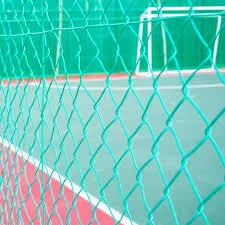The Importance of Silt Fences in Erosion Control
In an era where environmental protection and sustainable construction practices are crucial, silt fences have emerged as an indispensable tool in managing soil erosion and sediment runoff. One popular option is the 4x100 silt fence, which measures four feet in height and one hundred feet in length. This article delves into the functionality, benefits, and installation process of silt fences, particularly the 4x100 model, illustrating why they are pivotal in construction and landscaping projects.
Understanding Silt Fences
Silt fences are temporary sediment control devices used to help prevent sediment from leaving a construction site and entering nearby waterways. Composed of filter fabric supported by wooden or metal stakes, silt fences act as barriers that intercept and slow down stormwater runoff, allowing sediments to settle out and preventing them from polluting natural bodies of water.
The 4x100 silt fence is particularly popular due to its manageable size, making it easy to deploy on smaller construction sites. This specific dimension offers sufficient height to effectively capture sediment while being long enough to protect substantial areas.
Importance of Erosion Control
Soil erosion can lead to a myriad of environmental issues, including the degradation of water quality in rivers and lakes, habitat destruction, and loss of valuable topsoil. During construction activities, exposed soil is vulnerable to the effects of rain and wind, making erosion control essential. By using silt fences, contractors can minimize the impact of their activities on the surrounding ecosystem.
Benefits of Using a 4x100 Silt Fence
1. Cost-Effectiveness The 4x100 silt fence is relatively inexpensive compared to other erosion control measures. Its affordability makes it a popular choice for both small and large-scale projects.
2. Ease of Installation Installation of a silt fence is straightforward and requires minimal tools. Even those with limited experience in construction can efficiently erect a silt fence, ensuring that sediment control measures are in place quickly.
3. Flexibility and Versatility The 4x100 size is versatile, allowing for use in various environments, from residential landscaping to large construction sites. Its size can accommodate different terrains and project requirements.
4. Regulatory Compliance Many local and state regulations mandate sediment control measures during construction. Utilizing a silt fence helps ensure compliance with these regulations, thereby avoiding potential fines and project delays.
silt fence 4x100

5. Environmental Protection Beyond just controlling sediment, silt fences play a role in protecting aquatic ecosystems. By preventing the influx of sediments, they help maintain water clarity and reduce the likelihood of harmful algal blooms.
Installation Process
To effectively install a 4x100 silt fence, one should follow these steps
1. Site Assessment Evaluate the construction site to determine areas where water runoff is likely to occur. Identifying the flow patterns will help position the silt fence correctly.
2. Preparation Clear the area of debris and vegetation where the silt fence will be installed. This ensures that the silt fence has good soil contact and is not compromised by roots or rocks.
3. Setting Up Stakes Drive wooden or metal stakes into the ground at regular intervals, making sure they are firmly anchored. The recommended spacing is about six to eight feet apart, depending on the site's conditions.
4. Securing the Fabric Attach the filter fabric to the stakes, ensuring that it extends down into the soil by at least six inches. This will prevent water from flowing underneath the fence.
5. Backfilling Once the fabric is attached, backfill soil at the base of the fence to create a sturdy barrier. This step is crucial for preventing the fabric from collapsing during heavy rainfall.
6. Maintenance Regularly inspect the silt fence for breaches, tears, or sediment buildup. Prompt maintenance will ensure continuous effectiveness in controlling sediment runoff.
Conclusion
Silt fences, especially the 4x100 model, are vital tools in the fight against soil erosion and sediment pollution. Their cost-effectiveness, ease of use, and regulatory compliance make them an attractive option for both residential and commercial projects. By employing silt fences, we can protect our waterways and contribute positively to the environment while meeting our construction needs. As awareness of environmental issues grows, the role of silt fences in construction and landscaping will undoubtedly remain significant.
















